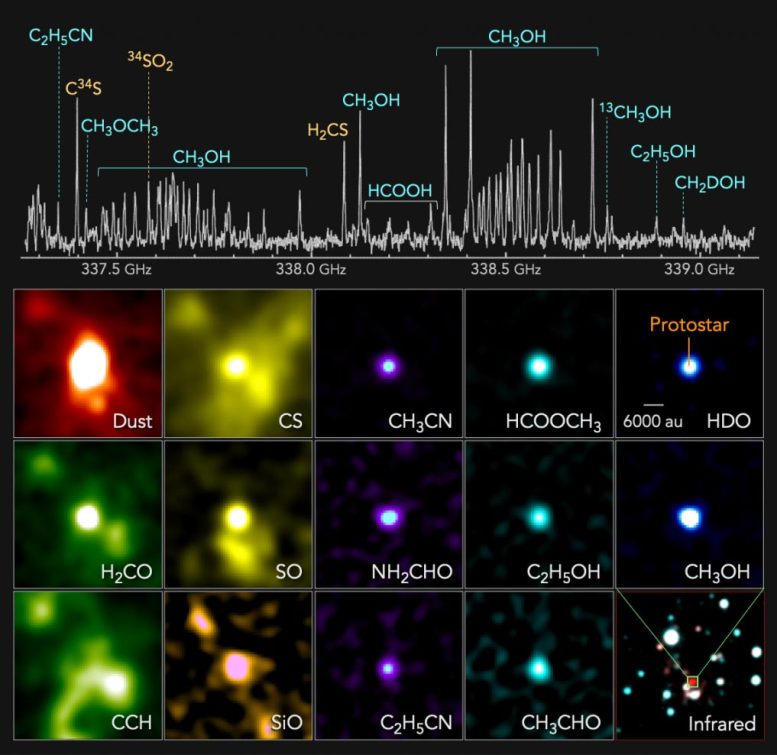The European Southern Observatory’s Very Large Telescope (VLT) and Atacama Large Millimeter/submillimeter Array (ALMA) have imaged a snake-like galaxy. Scientists named the galaxy NGC 1087, and it is swirling through space almost 80,000 light-years from our planet.
ALMA’s image of this snake-like galaxy is breathtaking
The snake-like galaxy spans over 86,800 light-years across. It can be found within the constellation Cetus. This particular part of the sky is home to several other water-themed constellations, too, such as Pisces and Aquarius. It isn’t the largest galaxy we have discovered but, it’s still impressive.
They created the main image by combining multiple images from ALMA and the Multi-Unit Spectroscopic Explorer on the ESO’s VLT. This allowed the ESO to create an image that showcases the full galaxy, along with the cold clouds of star-spawning gas that surrounds it. Additionally, the areas tinted with blue represent older stars that are more mature.
Scientists captured the shots as part of a conjunctive project called the Physics at High Angular Resolutions in Nearby Galaxies Survey, or PHANGS. The team assigned scientists to help deliver a catalog of high-resolution observations of nearby galaxies while using telescopes that target a wide range of different wavelengths. This snake-like galaxy is just one that the team has seen.
And ALMA is perfect for capturing images of galaxies like this because of how high up it is. The observatory is located at an altitude of 5,000 meters (16,500 feet) in Chile. As such, it has an excellent vantage point for the 66 radio telescopes the observatory is equipped with. READ MORE...
A spiral galaxy is curled up like a sleeping serpent in a striking new image from the European Southern Observatory's (ESO) Atacama Large Millimeter/submillimeter Array (ALMA).ALMA's high altitude of 16,500 feet (5,000 meters) and extremely dry climate in Chile's Atacama Desert provide an excellent vantage point for the observatory's 66 radio telescopes to penetrateSwirling silently 80 million light-years from Earth like a sleeping, coiled snake, NGC 1087 is an intermediate spiral galaxy that spans 86,800 light-years in the constellation Cetus. This area of the sky is named after a sea monster from Greek mythology and is home to other water-themed constellations, like AquariuSeen as a composite image composed of shots taken at different wavelengths, ALMA's observations capture the galaxy's lava-like reddish hue, which represents cold clouds of star-spawning molecularThe blue-tinted regions indicate areas of older, more mature stars, all imaged by the Multi-Unit Spectroscopic Explorer on ESO's Very Large Telescope, located at the expansive ALMA observatory site, ESO representatives said in a statement(op



